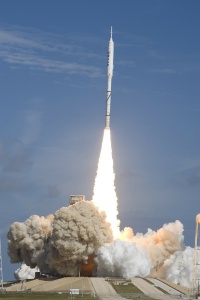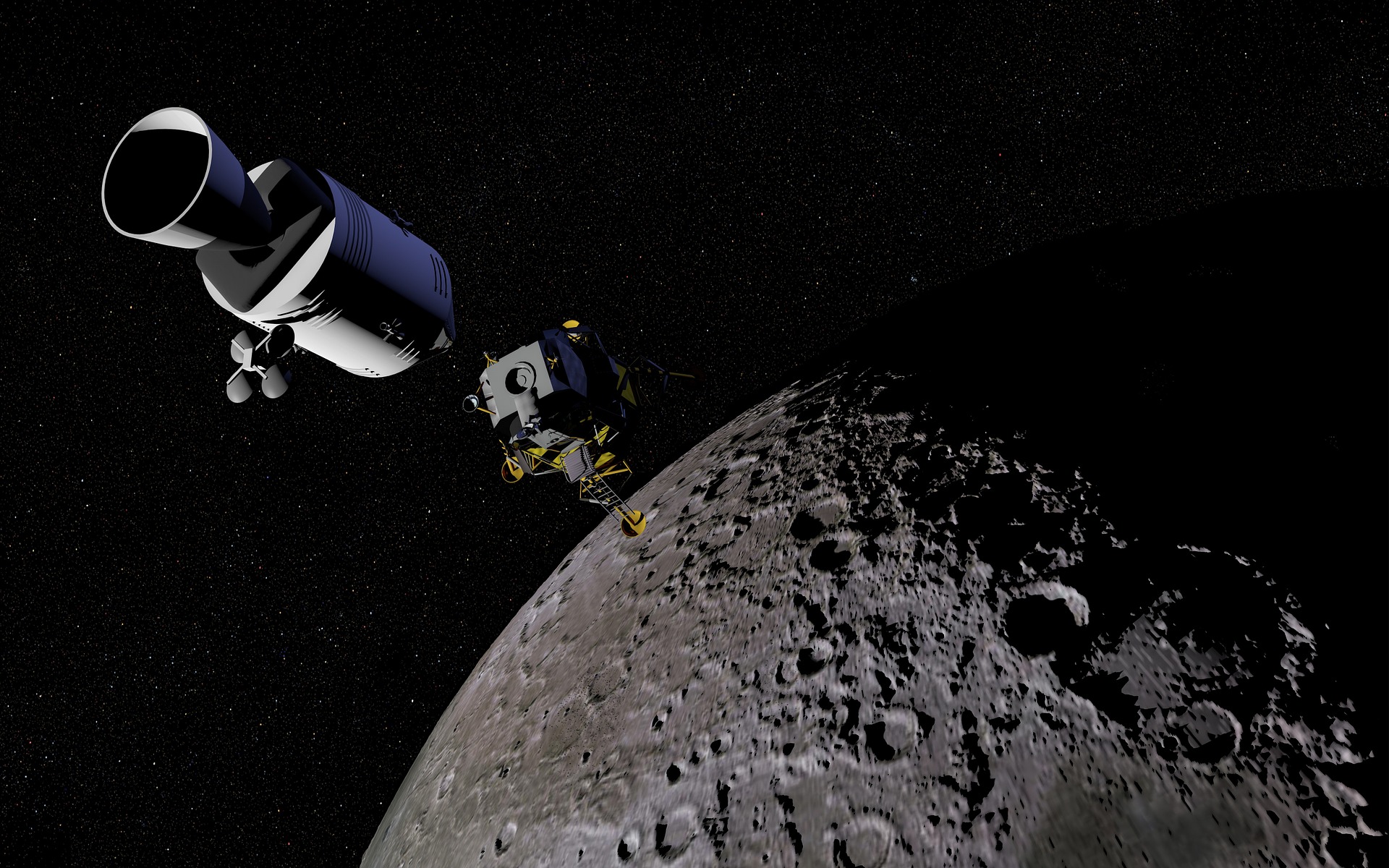
Claire Greenhouse in her final article for Starjammer Engineering’s blog, takes a look at the latest efforts to return to the Moon. Man has not set foot on the Moon since 1972 – the Apollo project had waned in popularity, America was embroiled in a vicious proxy war in Vietnam, and Detente with the Soviet Union meant a slight thaw in the Cold War, one of the main imperative goals for reaching the Moon in the first place; all factors that all but mothballed the Apollo project, save for Skylab and the Apollo-Soyuz Test Project.
Claire looks at where we are now, where various enterprises are heading…and when we will realistically be back there.
Introduction
This article explores the issues around a return to the moon as well as looking at some of the current projects underway to make this happen. When you look back at the original moon landing in 1969, it is hard to imagine why we have not just ‘popped back there’ in 2018 with our new technology.
Areas explored in the article include why there has been a delay in man’s return to the moon, why now is a good time to go back and what is currently underway to potentially aid or ensure our return to the moon in the (estimated) mid 2020’s.
It’s been a while. Why the gap?
The main reasons for the delay are two-fold. In short, it is expensive and incredibly dangerous. Ronald Reagan and President George Bush raised funding to help the space exploration efforts, but this was then slowed and partially diminished during economic events in the West. New funding and private funding initiatives as well as collaborative working with international partners have ‘reignited’ the flame of desire to return to the moon, as well as the enablement’s around the project.
Magnitude of cost for the rockets are often prohibitive and this has delayed our return to our lunar neighbour. For instance, the Saturn V rocket that was in use from 1967-1973 reportedly cost in today’s prices $710 million to produce, and this is before it left the ground! Launch costs were estimated at around $1.23bn per launch of the rocket over its life cycle. It was decommissioned after the Apollo mission.
One of the ways that the costs are being lowered is to use off the shelf existing components to build the rockets rather than each component being bespoke. The new designs aim to incorporate existing technology and parts as much as possible to keep the prices down. This is even down to the recovery landing platforms (re-purposed cargo ships and similar) for the expended initial rocket launchers, used to get the Rocket into the first stage of orbit. The thinking is the lower the complexity, the lower the cost. But of course, the process of space flight still needs to be safe and to achieve its aims.
In history, many lives have been lost or nearly lost when rocket missions have failed. Notably the Challenger disaster in January 1986, where all seven astronauts on board lost their lives. A recent Russian rocket launch failed and blew apart its landing platform and itself. These events make some governments and politicians understandably cautious. Man made it to the moon in 1969 in the Apollo mission, however, the goals and boundaries we have now are pushed further into ambition also pushing the safety boundaries of the missions, when the risks were high already.
Why now is a good time to return to the moon?
The zeitgeist and economics of the world have changed hugely since 1969 and the growth of creative and collaborative funding strategies and companies such as SpaceX, Virgin and Lockheed Martin joining the race has altered the funding streams for such projects. Increased funding streams lead to higher motivation levels to get the projects off the ground.
The Apollo rocket design that took Neil Armstrong to the moon was way ahead of its time and some parts of the structure will be very similar in the next rocket that goes to the moon. However, the launch processes and computer hardware and software will be very different and advanced from the original mission.
Current Projects for the return to the moon
Lunar Landing craft are planned by Blue Origin (a space venture company backed by the founder of Amazon, Jeff Bezos) and Lockheed Martin, whilst NASA are planning a Lunar Gateway to orbit the earth providing support for expeditions to the moon and possibly further afield in the future. These companies and agency along with Boeing are all approaching the moon and Mars explorations as a collaborative effort and are happy to work together to achieve these momentous goals.
Blue Origin have released artistic impressions of their proposed space lander currently in development. These four-legged landers are to be sent up using a NASA SLS (Space Launch System) rocket, or alternatively the Blue Origin ‘New Glenn Rocket’ (which should be flying by 2020). Blue Origin wish for them to deliver payloads to provide a permanent settlement. A settlement on the moon is seen as a ‘basecamp’ to allow the eventual exploration of Mars.
 ‘The NASA Gateway’
‘The NASA Gateway’
NASA management are looking to focus on the construction and operation of a space station to orbit around the moon and provide a supportive gateway for further travel into space. ‘The Gateway’ is formally known as the Lunar Orbital Platform Gateway (LOP-G) and will be optimized to travel in high lunar orbit around the south pole area of the moon. The LOP-G will provide support for crew visits and science experiments such as the Orion Missions. The first modules for the gateway are planned for launch from 2022 onwards. The Orion Missions spacecraft will be capable of housing a crew of 4 for 21 days when the spacecraft is launched in 2023 (or thereabouts!). When the mission is complete, it will be the first crewed flight out of low Earth Orbit – later paving the way for further lunar expeditions and the exploration of Mars.
The Space Station Gateway, LOP-G, predicted to orbit in the ‘near-rectilinear halo orbit’ of the moon, will be made of separate modules that will be assembled in space to form the space station. The first module will be the PPE or the Power and Propulsion element in 2022. The module launch pattern is shown in the table below:
| Module name/description | Year | Function |
| Power and Propulsion element (PPE) | 2022 | Power, initial communications system, in-space transport functionality |
| Early Operational Capability | 2023 | PPE refuelling, additional communications. Some science airlock capability, initial habitation capability for up to 15 days. |
| EVA (Extravehicular Activity) | Est 2020’s | Additional Docking capability, airlock to enable EVA’s (when astronauts leave the craft attached to a docking system) |
| Enhanced Habitation | 2024/2025 | Increased volume for habitation and experiments |
| Enhanced Science and operations modules | 2024 | Providing additional payloads for logistics, utilization and external robotic components |
The habitation space will consist of 2 units developed by NASA and international partners of at least 125 cubic metres to allow optimum health of the crew and the space to carry out biological experiments. The PPE will use a Solar electric propulsion system (SEP) and the lifecycle of the spacecraft needs to be a minimum of 15 years AFTER separating from the launch craft.
So, despite delays which have occurred so far and will undoubtedly occur in the future, it looks like it won’t be too long before we head back to the moon. Neil Armstrong unfortunately is not around to see it but I am sure he has inspired the generation of astronauts who will be on these manned missions.



